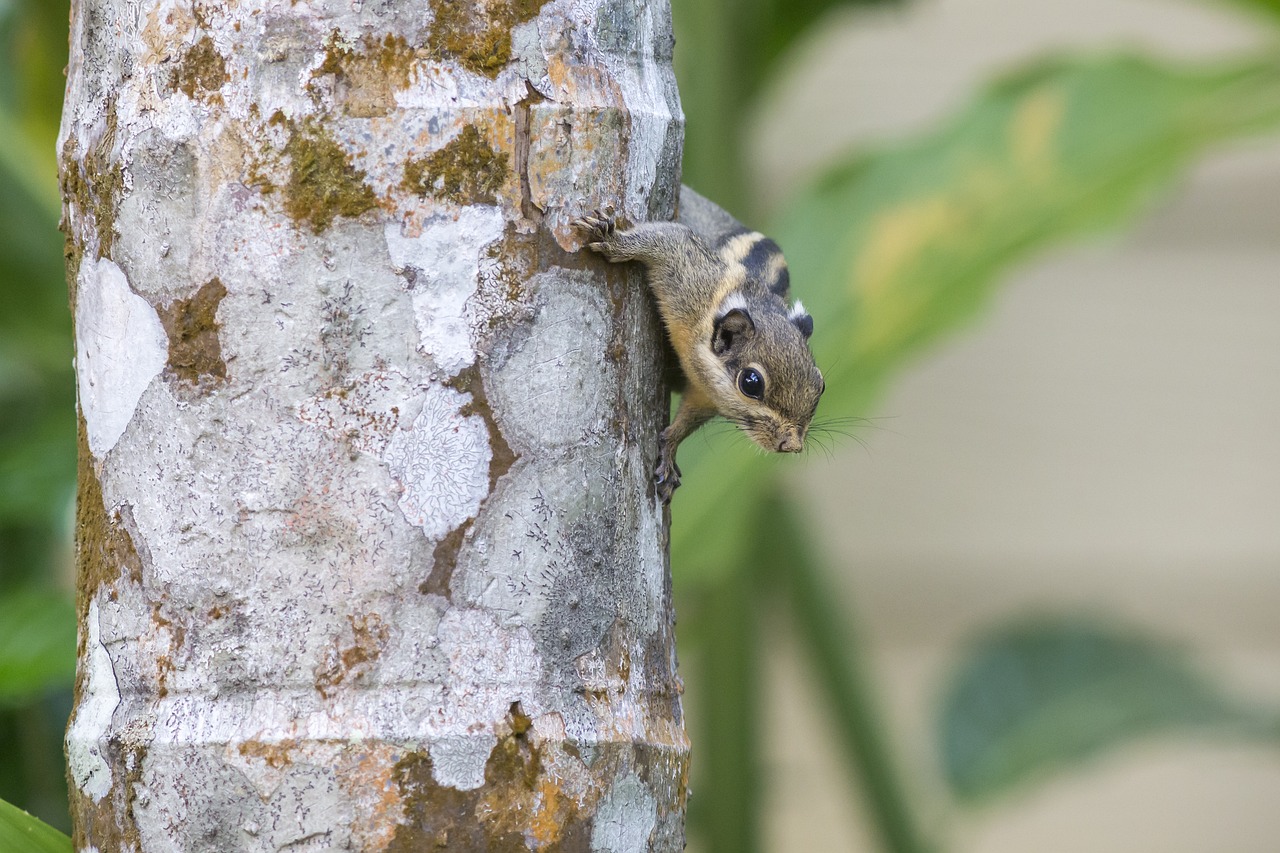The Himalayan Striped Squirrel (Tamiops mcclellandii), also known as McClelland’s Tree Squirrel, is a species of squirrel native to the Himalayan region of Asia. Here are some key features and characteristics of the Himalayan Striped Squirrel:
- Appearance: The Himalayan Striped Squirrel has a distinctive appearance with a combination of gray, brown, and white fur. It has a long, bushy tail that is often slightly darker in color than the rest of its body. The squirrel’s body is slender, and its fur may have faint stripes or markings along its length.
- Size: These squirrels typically measure around 15 to 20 centimeters (6 to 8 inches) in length, not including their tail, which can be another 15 to 20 centimeters long. They usually weigh between 100 to 200 grams (3.5 to 7 ounces).
- Habitat: Himalayan Striped Squirrels inhabit a variety of forested habitats in the Himalayan region, including temperate and subtropical forests, as well as montane forests at higher elevations. They are arboreal creatures and spend much of their time in trees, where they forage for food and seek shelter.
- Diet: These squirrels are omnivorous and have a varied diet that includes nuts, seeds, fruits, berries, insects, and small invertebrates. They are known to forage on the forest floor as well as in the canopy, using their sharp incisors to gnaw through tough outer coverings of nuts and seeds.
- Behavior: Himalayan Striped Squirrels are agile climbers and are often seen leaping from branch to branch in the forest canopy. They are primarily diurnal, being most active during the day, and may retreat to tree hollows or leaf nests at night for protection from predators and the elements.
- Reproduction: Like many squirrel species, Himalayan Striped Squirrels breed seasonally, with peak breeding activity occurring during certain times of the year. Females give birth to litters of 2 to 4 young after a gestation period of about 30 days. The young are born blind and hairless but develop quickly and are weaned by the mother after several weeks.
- Conservation: The conservation status of the Himalayan Striped Squirrel is not well-documented, but it is generally considered to be of least concern by the International Union for Conservation of Nature (IUCN). However, like many wildlife species, its populations may face threats from habitat loss, fragmentation, and human disturbance.
Overall, the Himalayan Striped Squirrel is an important component of Himalayan forest ecosystems, where it plays a role in seed dispersal and nutrient cycling. Its charming appearance and active behavior make it a fascinating subject for wildlife enthusiasts and researchers studying the biodiversity of the region.
Visited 833 times, 3 visit(s) today
Views: 1265
Subscribe to the newsletter:
